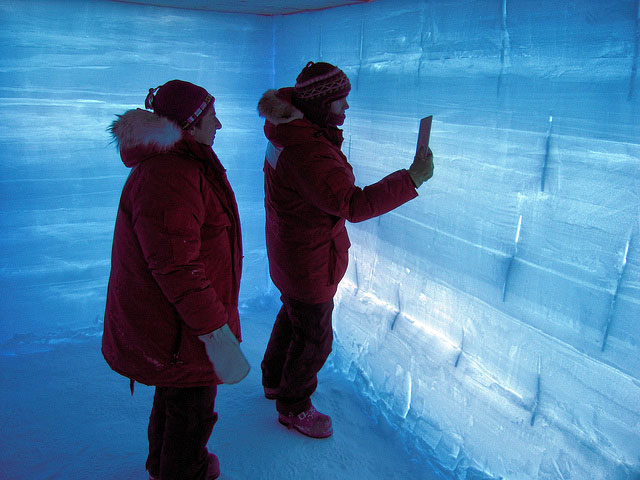Heinz AwardsAlley recognized for research and outreach efforts on climate changePosted September 23, 2011
Richard Alley The Heinz Awards This year’s awards focused on the environment, but the nine winners were also chosen based on their related contributions to the other award categories recognized in many previous years, including arts and humanities, public policy, technology and the economy. 
Richard Alley
Alley’s discovery that the last Ice Age came to an abrupt end over a period of only three years broke open the field of abrupt climate change. This debunked the myth that climate change is a slow process and suggests that some climate changes in response to human-induced activities, particularly the burning of fossil fuels, may arrive more rapidly than expected. “Dr. Alley’s research on ice cores has provided an essential cornerstone to the study of environmental change,” Teresa Heinz, chairman of the Heinz Family Foundation, said in a press release from Penn State. “He discovered that such changes can be abrupt and massive, and he is able to communicate these complex ideas in a clear and compelling way.” Alley has received more than 30 grants as a principal investigator or co-PI from the National Science Foundation The Penn State scientist regularly testifies before congressional committees and policymakers on climate change. He has been a lead and contributing author on several reports from the Intergovernmental Panel on Climate Change Alley is active in communicating earth sciences to the general public. Earlier this year, he hosted a PBS special on climate change and sustainable energy called “Earth: The Operators’ Manual”
“Climate change is an enormous challenge that requires big action,” Alley said. “Our grandchildren will one day ask us to explain the choices our leaders made today.” NSF-funded research in this article: Richard Alley, Penn State, Award Nos. 1043528 See previous interview with Richard Alley: It's just physics. |



For USAP Participants |
For The Public |
For Researchers and EducatorsContact UsU.S. National Science FoundationOffice of Polar Programs Geosciences Directorate 2415 Eisenhower Avenue, Suite W7100 Alexandria, VA 22314 Sign up for the NSF Office of Polar Programs newsletter and events. Feedback Form |


